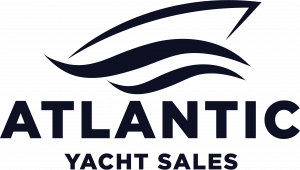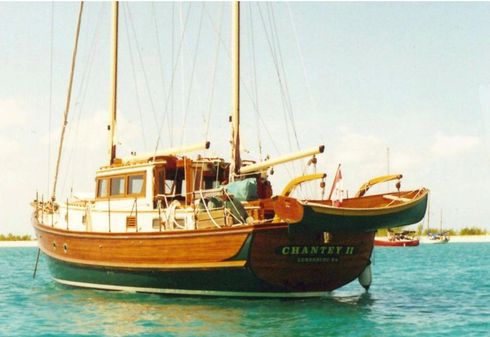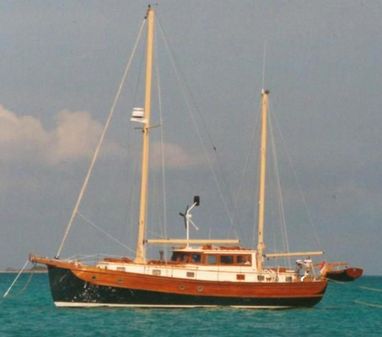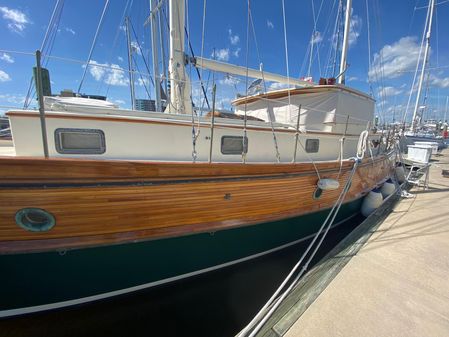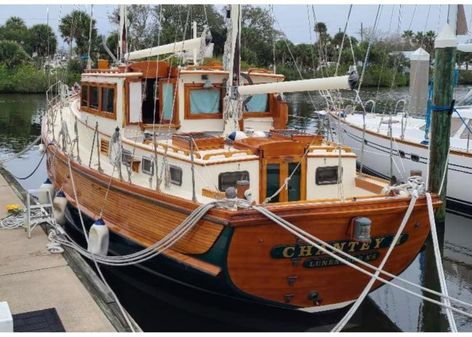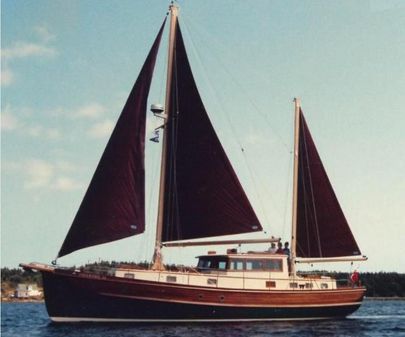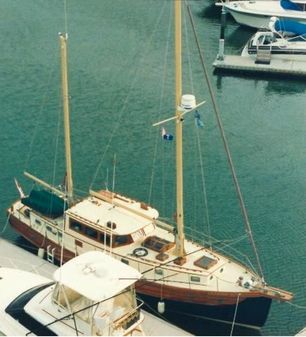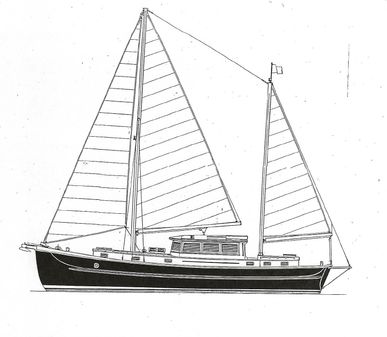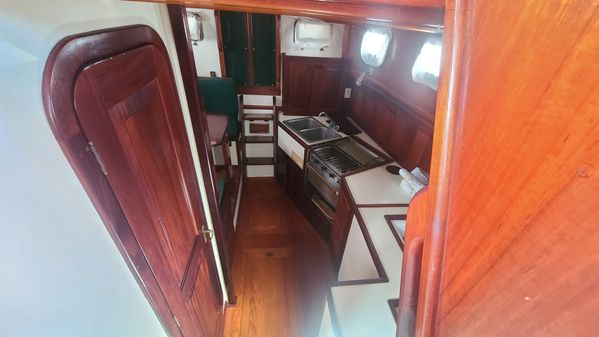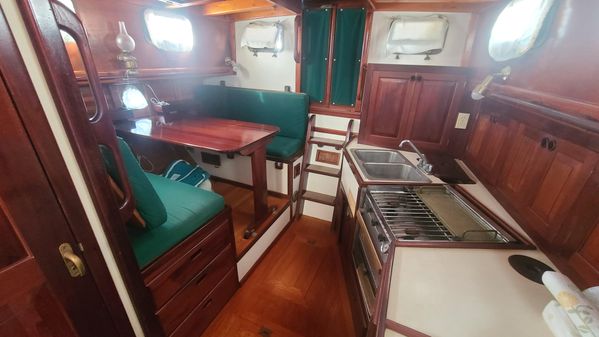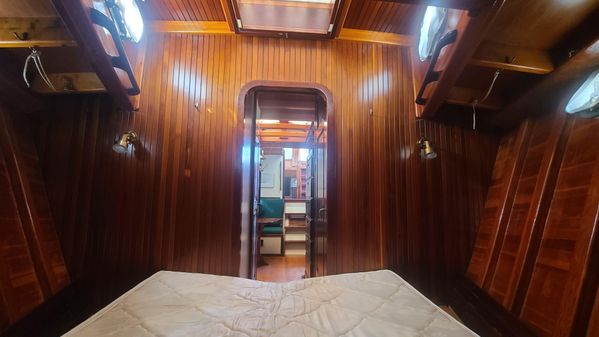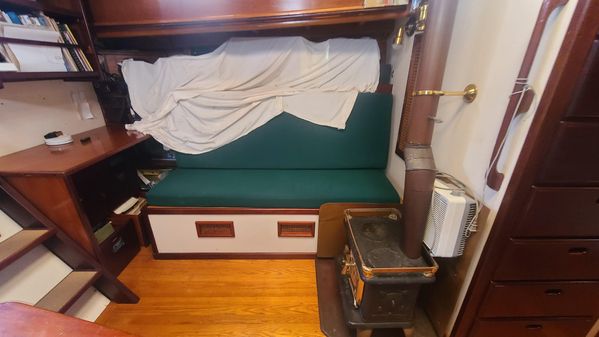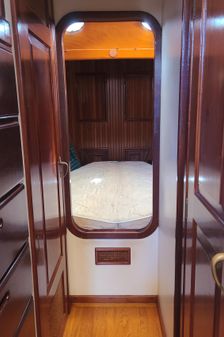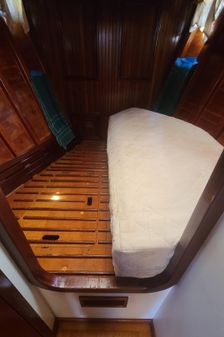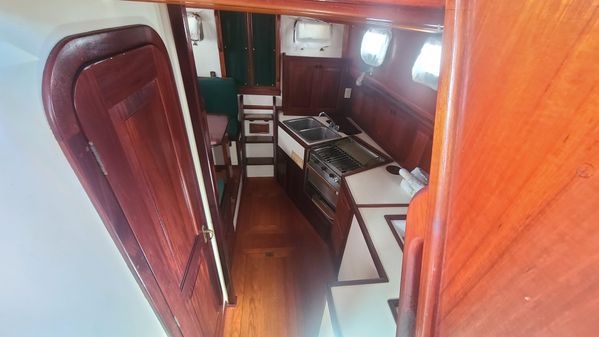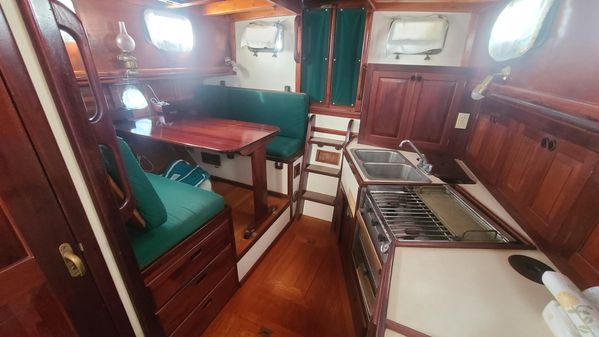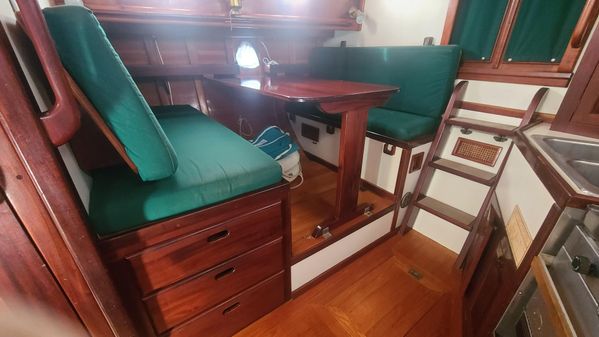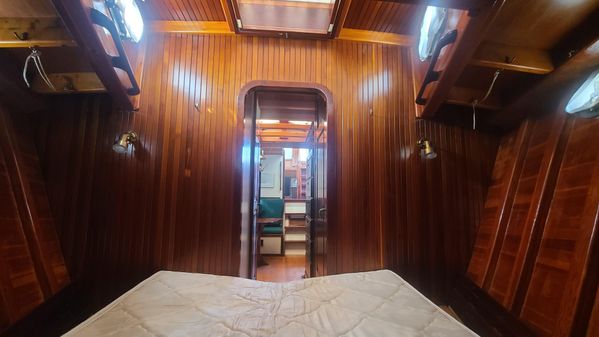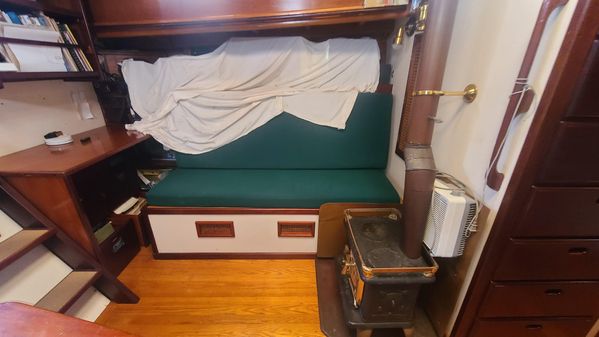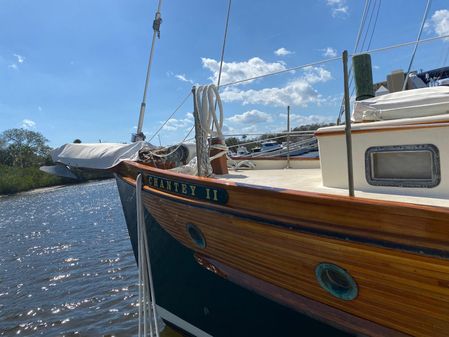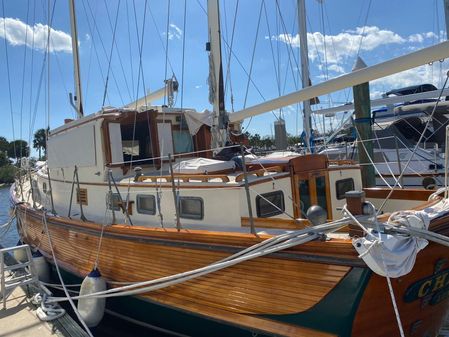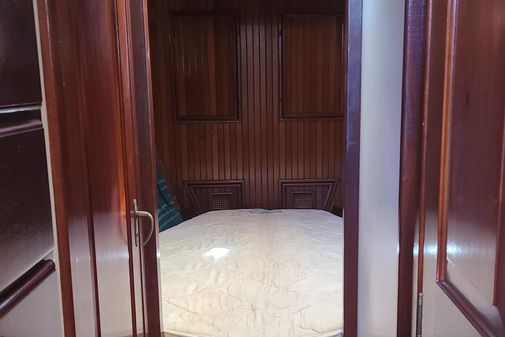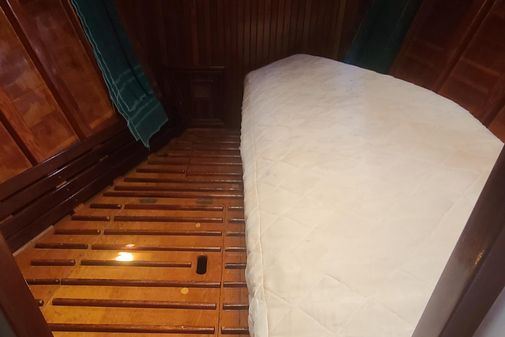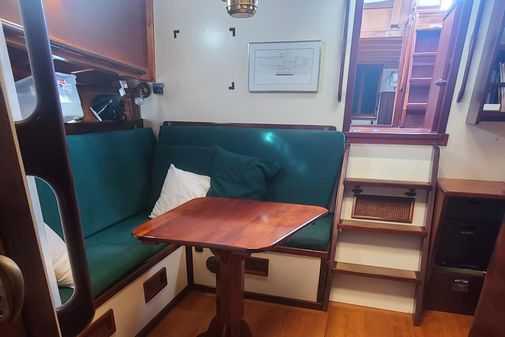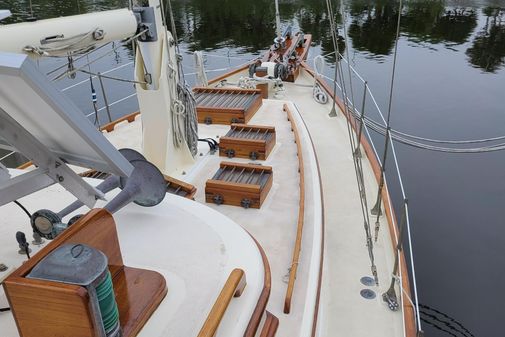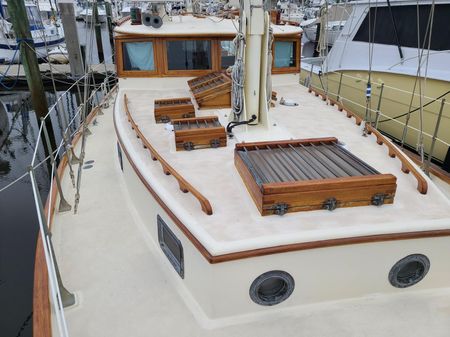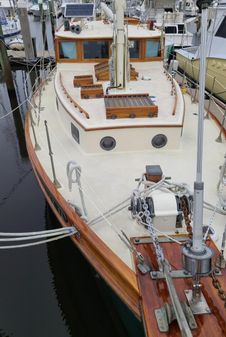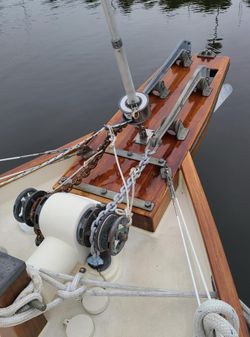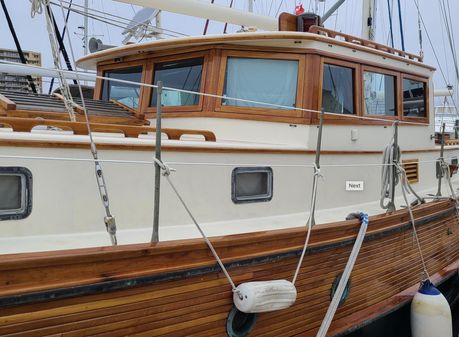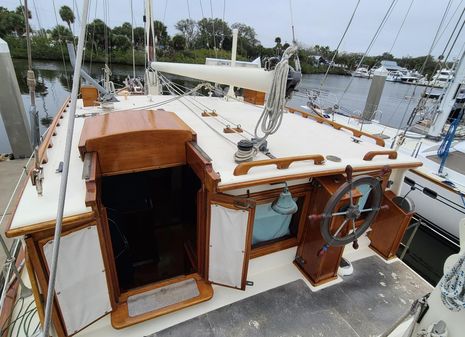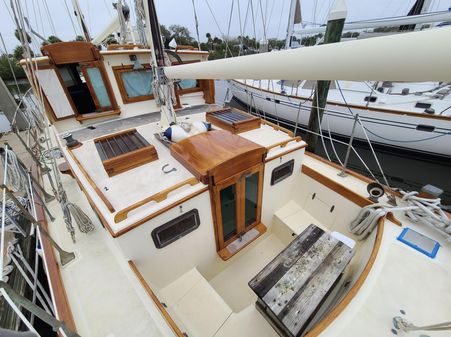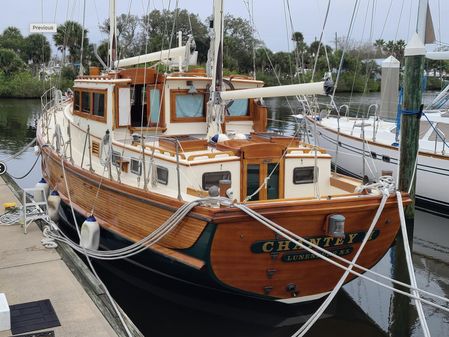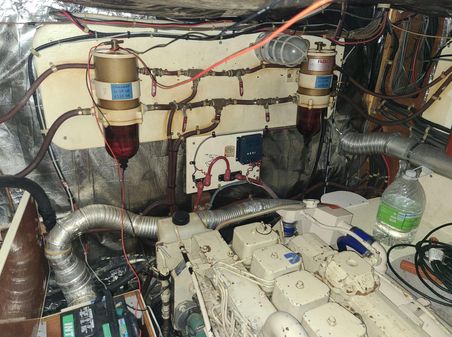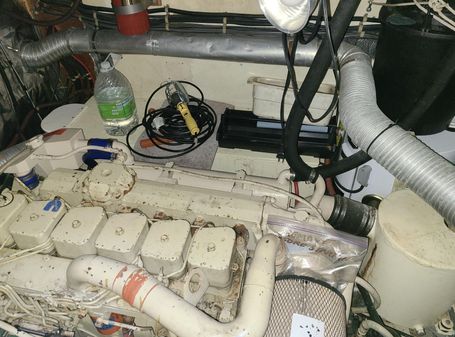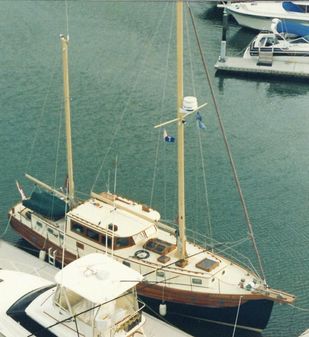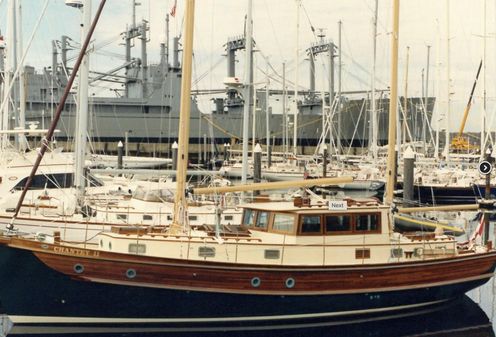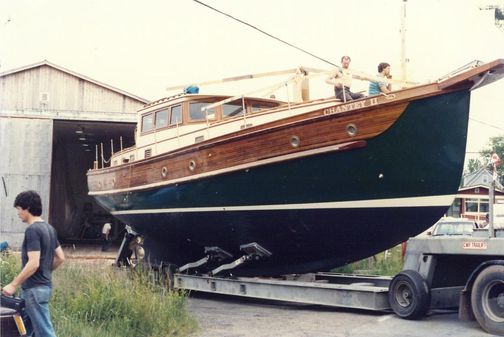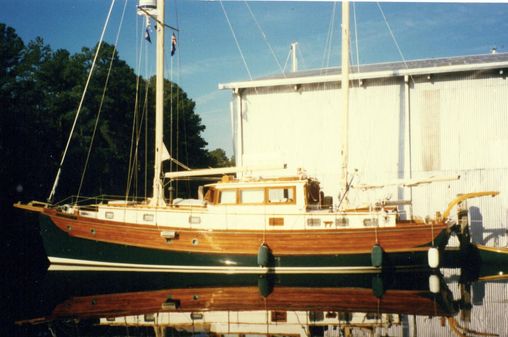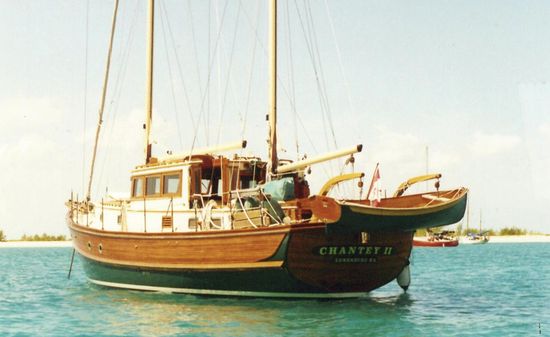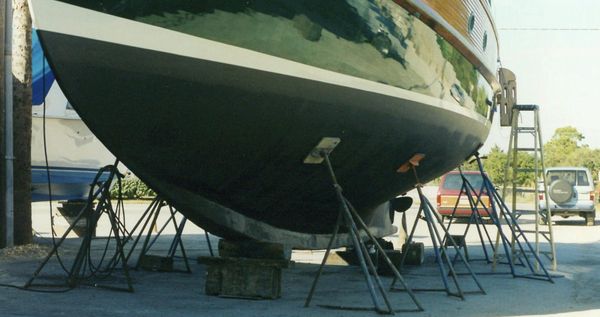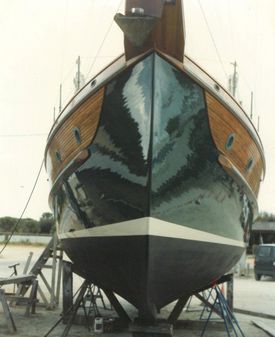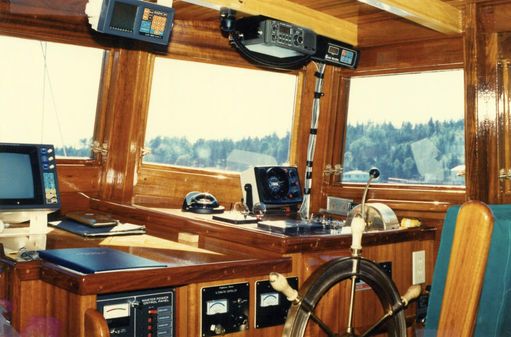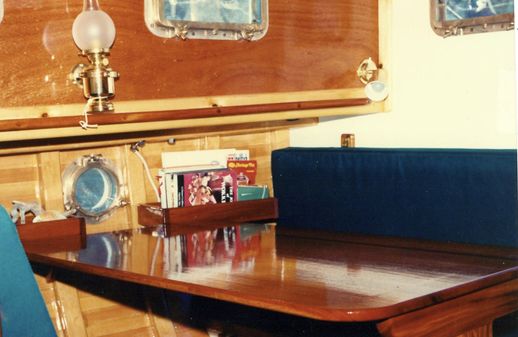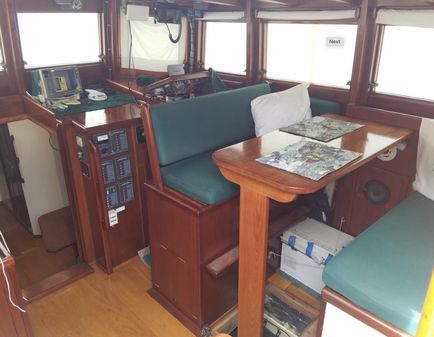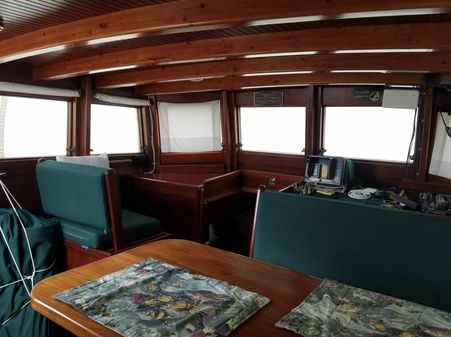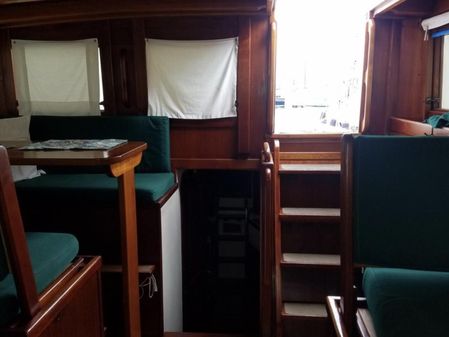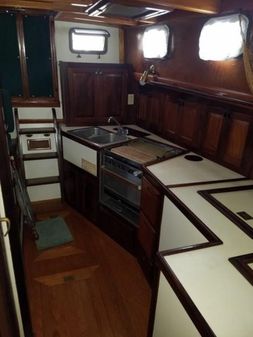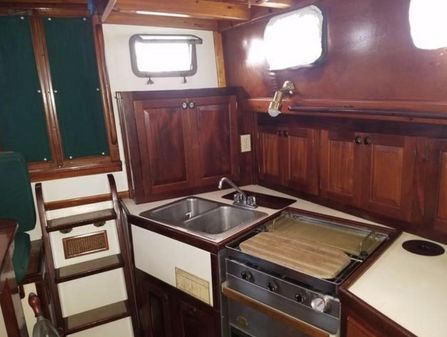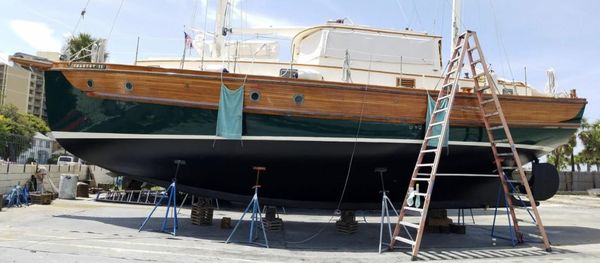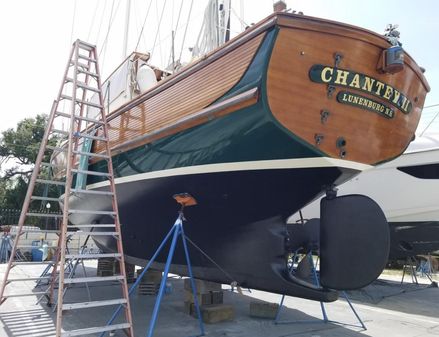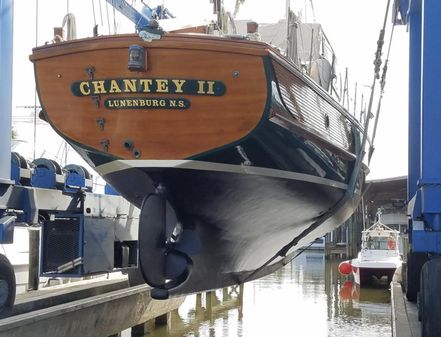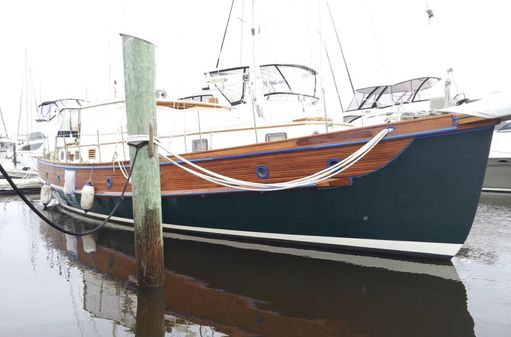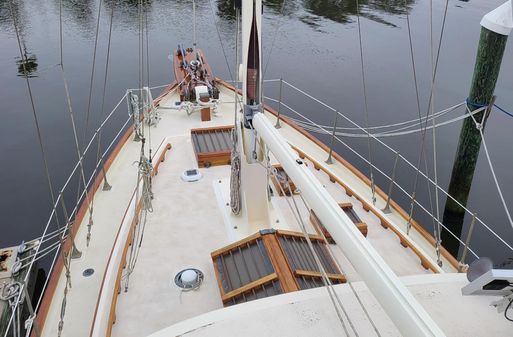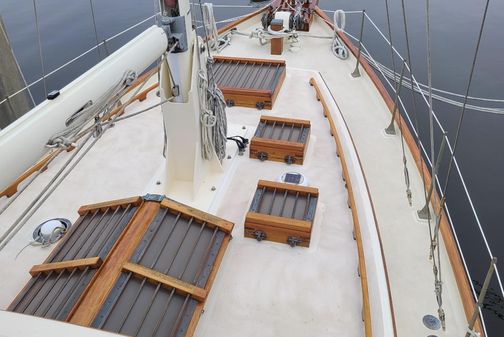Basic Boat Info
Dimensions
Engines / Speed
- Make: Cummins
- Model: 6BT 5.9
- Drive Type: Direct
- Fuel: Diesel
- Engine Power: 210hp
- Type: Inboard
- Year: 1988
- Engine Location: Center
Tanks
Other
Contact
Office
4425 Hwy 3
Chester, NS, CA, B0J 1J0
Tel:902-593-1280
The Company offers the details of this vessel in good faith but cannot guarantee or warrant the accuracy of this information nor warrant the condition of the vessel. A buyer should instruct his agents, or his surveyors, to investigate such details as the buyer desires validated. This vessel is offered subject to prior sale, price change, or withdrawal without notice.
Designer: William Hand, Jr.
Builder: Covey Island Boatworks
Year Built: 1989
LOA: 47.71’
LWL: 43.90’
Beam: 13.69’
Draft: 5.00’
Displacement: 50,400 lbs.
External Ballast:7,700 lbs. Internal Ballast: 5,300 lbs.
Trim Ballast: 2,000 lbs.
Sail Area: 709.80 sq. ft.
Displacement / Length: 2.66
Sail Area / Displacement: 2.89
Propulsion / Engine: Single 210 HP Cummins 6-cylinder turbo-diesel,
Model 6BT-5.9
Engine Hours: 6,879.20
Cruising Speed: 7.5-8 Knots
Cruising RPM: 1200-1400 RPM
Cruising Fuel Consumption: 1.3 USGPH
Fuel Capacity: 500 Gallons
Fresh Water Capacity: 260 Gallons
Black Water Capacity: Unknown, 2 large stainless steel tanks
CHANTY II is of wood-epoxy strip-planking on laminated frame construction exclusively using WEST System Epoxy throughout the hull construction.
Planking, laminated frames and sheer clamps are of Douglas Fir with nominal dimensions as follows:
Planking: 2” x 2”
Frames: 2” x 3”
Sheer Clamps: 6” x 6”
Deck Beams are 3” x 3” laminated Pine
Scantlings are very close to the original design, however, the rigid, composite construction produces a much stronger, stiffer, tight and leak free hull.
The hull exterior is further protected from moisture intrusion and surface abrasion by a layer of fiberglass cloth set in epoxy and the hull interior is sealed with epoxy. Sub-Deck / Interior
Overhead and cabin tops are of tounge and groove Cedar and further constructed with two layers of ¾” marine plywood sheathed in fiberglass cloth set in epoxy with a painted smooth and non-skid exterior finish and a bright varnished interior finish Trunk cabin and pilot house sides are of solid woods (teak and mahogany) along with marine plywood sheathed in fiberglass cloth with a painted exterior finish and painted / varnished interior finishes.
All deck hardware such as stanchions, Sampson post caps, etc. is of bronze construction provided by either ABI or custom-cast by Lunenburg Foundry
Underwater configuration is that of a full keel with keel-hung rudder and propellor protected in an aperture at end of keel.
External ballast is made up of 3 lead castings approximately 8’ x 6” x 1’ incorporated into the central section of the keel.
Interior and trim ballast is of triangular lead castings approximately 4” x 4” x 3” set in the bilge and encapsulated in epoxy which also provides a flat unform bilge surface which is easy to clean up after any accidental (and inevitable) spills.
CHANTY II is powered by a single 1988, 210 HP Cummins 6-cylinder turbo-diesel, Model 6BT-5.9.
This is the low RPM, 12-valve, non-electronic diesel engine that was used in the Dodge Ram trucks of the day.
A July 2019 survey records the engine hour meter as reading 59.2 hours and that 6,532 hours should be added to this figure.
The transmission is a Borg-Warner 3 to 1 reduction “Velvet Drive” that enables very efficient operation at an easy cruise of 7.5-8 knots at approximately 1,200 engine rpm (400 rpm at propeller), burning approximately 1.3 gallons per hour.
12-Volt DC and 125-Volt / 30 Amp AC electrical systems
DC electrical power is generated by two separate, 130 Amp alternators with one alternator being dedicated to the engine starting bank and the other to the house bank.
Each alternator can be controlled by either an automatic or manually controlled regulator. The battery boxes are sized for 8-D batteries with three batteries in the house bank and one battery in the engine starting bank. When at anchor charging is by a (removable) wind generator located on the pilot house roof.
AC charging is by Smart Charger
There is no generator as running the engine for ½ hour twice a day easily looks after the charging requirements for normal ship’s needs and is the correct time for refrigeration temperature control.
When away from shore side, brief AC appliance use is handled by a 2300 watt inverter.
There are two 130 gallon tanks located in the main salon bilges.
Separate deck fills and plumbing for cross flowing or selection of tank in use.
Pressure water system with 12-Volt diaphragm pump down-stream from water filter. Hot water provided by AC water heater or engine heat transfer.
Two (forward and aft) manually operated marine sanitation devices (NSD / toilets).
Two large stainless steel holding tanks (forward and aft).
Separate deck fittings for pump-out (forward and aft)
System plumbed to allow for direct overboard discharge, discharge to holding tanks, transfer of black water from forward to aft holding tank and discharge overboard from aft holding tank by way of macerator pump.
VDO Sum log
Back-up log and depth instruments
Icom VHF radio
Icom SSB radio
Icom Ham radio
Icom GPS
Furuno radar Wagner autopilot
Masthead rigged ketch configuration
Spars are deck stepped on custom built tabernacles
Masts, booms and standing and running rigging all built and / or provided by Hood Yacht Systems Masts and booms of aluminum construction with painted finish
Hood Stoway main and mizzen mast furling systems
Hood roller-furling headstay
Over-sized stainless steel standing rigging with swedged upper terminus and Sta-Lok lower terminals.
Stainless steel turnbuckle adjusters
All 3 sails (Hood Sailmakers Main, Mizzen and headsail) are furling and easily handled from the exterior helm station by one person.
Under Power
This mode was used in canals, rivers and the Intracoastal Waterway. With the reduction gearing and large 4-blade prop, typical motoring is at 7.5-8 knots at 1200-1400 engine rpm’s for an efficient fuel consumption of about 1.3 gallons per hour. CHANTY II is intentionally (and considerably) over-powered. Under “close to hull speed” cruising, under reasonable conditions only a fraction of the available power is needed, as evidenced by the low fuel consumption. However the power is there when and if it’s needed either intentionally as in powering into strong head winds or unintentionally as in when you find the inevitable shifted mud bank and need to back off and get back to the matters at hand
Under Sail
Just plain sailing was rarity for us unless in open offshore waters or in the expanses of the Great Lakes and / or Bahamas. CHANTY II is no racer but given a decent wind she will move right along as thanks to her efficient hull form she is very easily driven. Having the ability to sail (and sail well) is always a great addition and the comfort in knowing you can always get home is very reassuring although we’ve never had to do that thanks to the reliable Cummins diesel. All your sail handling can be done from the exterior hem station (just aft of the pilot house) and this is the place to be also when going under bridges or anchoring.
Motor Sailing
This is what William Hand intended in his motor sailing designs. In calm conditions with some wind you’ll see a slight boost in speed or a lower RPM. In rough conditions (where there is usually plenty of wind) motor sailing alters the motion from rocking & rolling / side to side to a gentle up and down motion at a comfortable angle of heel. We were twice caught out in the Gulf Stream in 8’ to 10’ seas (due to incorrect forecasts) and found the motion and progress quite tolerable and some long tacks enabled us to keep our course with full sails and a comfortable motion. Your typical trawler motor yacht would have had a tough time. We always felt that CHANTY II provided the best of both worlds.
Furthest forward is sleeping cabin with berthing for two persons in a full V-berth configuration.
Next aft is a passageway to the main salon area with generous storage in drawers and hanging lockers to port and head area with separate shower stall to starboard.
Continuing aft one enters the main salon with an L-shaped settee to starboard fronted by an adjustable height coffee table and a straight settee to port. Also included in the main salon is a cast iron solid fuel stove / cabin heater.
Companionway stairs lead aft out of the main salon up to the pilot house. The pilot house has generous -sized helm and passenger seating port and starboard with seat backs that can be reversed in direction allowing the helm seat to become one of two seats forward and aft of the pilot house table (to starboard) and allow the passenger seating to face aft when desired.
Furthest aft in the pilot house is a door to the outside steering station and companionway stairs leading aft and down to the aft cabin. Immediately to starboard after descending the companionway stairs is the aft head area with separate shower stall.
Continuing aft on the starboard side is a large dining table that can convert to sleeping accommodations for two persons.
The port side of the aft galley is dominated by an expansive galley area with large storage lockers outboard. Lastly in the aft cabin is yet anther set of companionway stairs leading aft and up to the aft cockpit.
The Company offers the details of this vessel in good faith but cannot guarantee or warrant the accuracy of this information nor warrant the condition of the vessel. A buyer should instruct his agents, or his surveyors, to investigate such details as the buyer desires validated. This vessel is offered subject to prior sale, price change, or withdrawal without notice.
